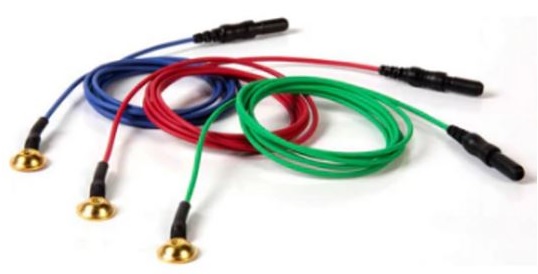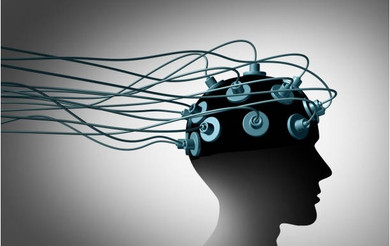In hospital systems, there exists a key diagnostic tool that stands tall above the rest for detecting and managing neurological disorders - the electroencephalogram (EEG). This valuable instrument aids in the diagnosis of epilepsy, brain injury, and sleep disorders by measuring electrical brain activity.
However, the accuracy of the EEG results lies heavily in the caliber of electrodes utilized during the procedure. Therefore, ensuring top-notch electrode quality is vital to secure accurate diagnosis and treatment for patients with neurological disorders.
In this article, we will delve into the critical role EEG electrodes play in diagnosing and treating neurological disorders, how these electrodes impact EEG data quality, and the different types of electrodes available in LifeSync Neuro.
Why Are EEG Electrodes Important?
Electroencephalogram (EEG) electrodes record brain activity by picking up impulses sent between neurons electrically.
The electrodes are positioned on the scalp to measure voltage changes brought on by ionic current flowing through the neurons. These signals are then amplified and recorded to create an EEG tracing.
EEG electrodes are very helpful in diagnosing patients who may have seizures, epilepsy, or other unusual episodes. In addition, EEG can be used for various other medical purposes.
For instance, during surgical procedures, EEG can monitor the level of anesthesia being administered. This is because the electrodes are very sensitive and with the device, it can detect sudden changes in brain activity, which can help in identifying potential complications like ischemia or infarction.
This is why it is also very crucial to use reliable and high-quality EEG electrodes in hospital settings.
How do EEG Electrodes Impact EEG Data Quality?
Electroencephalograms, or EEGs, are widely used by neurologists, psychologists, researchers, and even those in the sports industry to track and study brain activity.
However, one of the significant challenges associated with EEGs is the electrode-scalp impedance. This term refers to the electrical resistance of the scalp, measured in kΩ, which can significantly affect the accuracy of the recording.
The epidermis, or outer layer of skin, has the highest impedance. Scalp abrasion is a common method used by professionals to reduce the impedance between the electrodes and the scalp, allowing for more precise recordings.
However, the use of high-quality EEG electrodes, like disposable gold cup electrodes, can significantly lessen the likelihood of infection and enhance the precision of the recording.
Additionally, understanding electrode-scalp impedance and the input impedance of modern differential amplifiers can help eliminate concerns about impedance and infection.
To ensure the best results, EEG electrodes should be free of inherent noise and drift.
Silver, silver chloride, and gold disk electrodes are typically considered the best options, although other electrode materials and pastes can be used effectively as well.
Overall, EEGs continue to be a valuable resource for assessing brain activity, and recent developments in electrode technology and methodology have made the tests even more precise.

The Different Types of EEG cup Electrodes
There are two main types of EEG electrodes available in LifeSync Neuro: silver chloride cup electrodes and gold cup electrodes in disposable and reusable versions.
Silver Cup Electrodes
Silver Cup Electrodes are made of a silver alloy and have a cup-shaped design that holds conductive paste. The paste is used to improve the contact between the electrode and the scalp, reducing noise and improving signal quality.
Silver cup electrodes are less expensive than gold cup electrodes and are typically used for short-term and long-term EEG recordings.
Gold Cup Electrodes
Gold Cup Electrodes are made of pure gold and have a similar cup-shaped design as silver cup electrodes. However, gold cup electrodes have superior signal quality and are more durable than silver cup electrodes.
Not only do gold cup electrodes have a lower likelihood of causing allergic or sensitive reactions on the skin, but they may also reduce the risk of skin damage and infections. This is because the wider edge design of the cup exerts less pressure on the skin.
As the pressure is calculated as force divided by area, a larger surface area results in less pressure and consequently, less risk of skin damage.
Despite being more expensive than silver cup electrodes, gold cup electrodes are a more suitable option for long-term EEG recordings due to their increased resistance to oxidation caused by sweat. Insurance companies also offer higher reimbursement rates for long-term EEG monitoring as compared to routine EEGs.
Tin Cup Electrodes
Tin Cup Electrodes are made of tin and have a low conductivity, which means they are less sensitive to subtle changes in brain activity.
They are typically used for routine EEG recordings and are relatively inexpensive but carry a higher risk of skin damage.
Best Practices for Using EEG Electrodes
- To ensure accurate EEG recordings, healthcare providers should follow these best practices when using EEG electrodes:
- Prepare the patient's scalp by cleaning it using a skin prepping gel that is only midly abrasive.
- Apply the conductive paste to the electrode cups to improve contact with the scalp
- Place the electrodes on the scalp according to the International 10-20 System for electrode placement.
- Check the impedance of the electrodes to ensure good contact with the scalp
- Record a baseline EEG recording with the patient in a relaxed state
- Avoid interference from other electronic devices or strong magnetic fields
By following these best practices, healthcare providers can improve the accuracy and reliability of EEG recordings.
The Importance of Sourcing EEG Electrodes from a Reliable and Single Supplier—LifeSync Neuro
When it comes to EEG electrodes, it is essential to source them from a reliable and single supplier. LifeSync Neuro is a leading manufacturer of high-quality EEG electrodes, providing healthcare providers with the best EEG electrodes for accurate diagnosis and treatment.
Using a single supplier ensures consistency in electrode quality and reduces the risk of using low-quality LifeSync Neuro offers a wide range of EEG electrodes, including both silver and gold cup electrodes, reusables and disposables to suit the needs of different patients and recording settings.
In addition to offering high-quality EEG electrodes, LifeSync Neuro also provides excellent customer support and technical assistance. This ensures that healthcare providers have access to the resources they need to obtain accurate EEG recordings and effectively diagnose and treat neurological disorders.
Conclusion
It is crucial to obtain a correct diagnosis and administer effective treatment for neurological illnesses. And when it comes to diagnosing such conditions, EEG electrodes are an indispensable tool.
Tiny electrodes attached to the scalp can record electrical brain activity, allowing doctors to better diagnose the cause of neurological issues.
However, electrode quality and placement significantly affect the accuracy of EEG data. To ensure reliable and accurate recordings, healthcare providers must use high-quality EEG electrodes from a trusted source.
Inconsistency in electrode quality or using low-quality or incompatible electrodes can compromise the accuracy of EEG results.
That's where LifeSync Neuro comes in. As a leading manufacturer of EEG electrodes, LifeSync Neuro provides healthcare providers with top-of-the-line electrodes for precise and dependable EEG recordings.
With a commitment to quality and consistency, LifeSync Neuro offers a solution that medical professionals can rely on.

